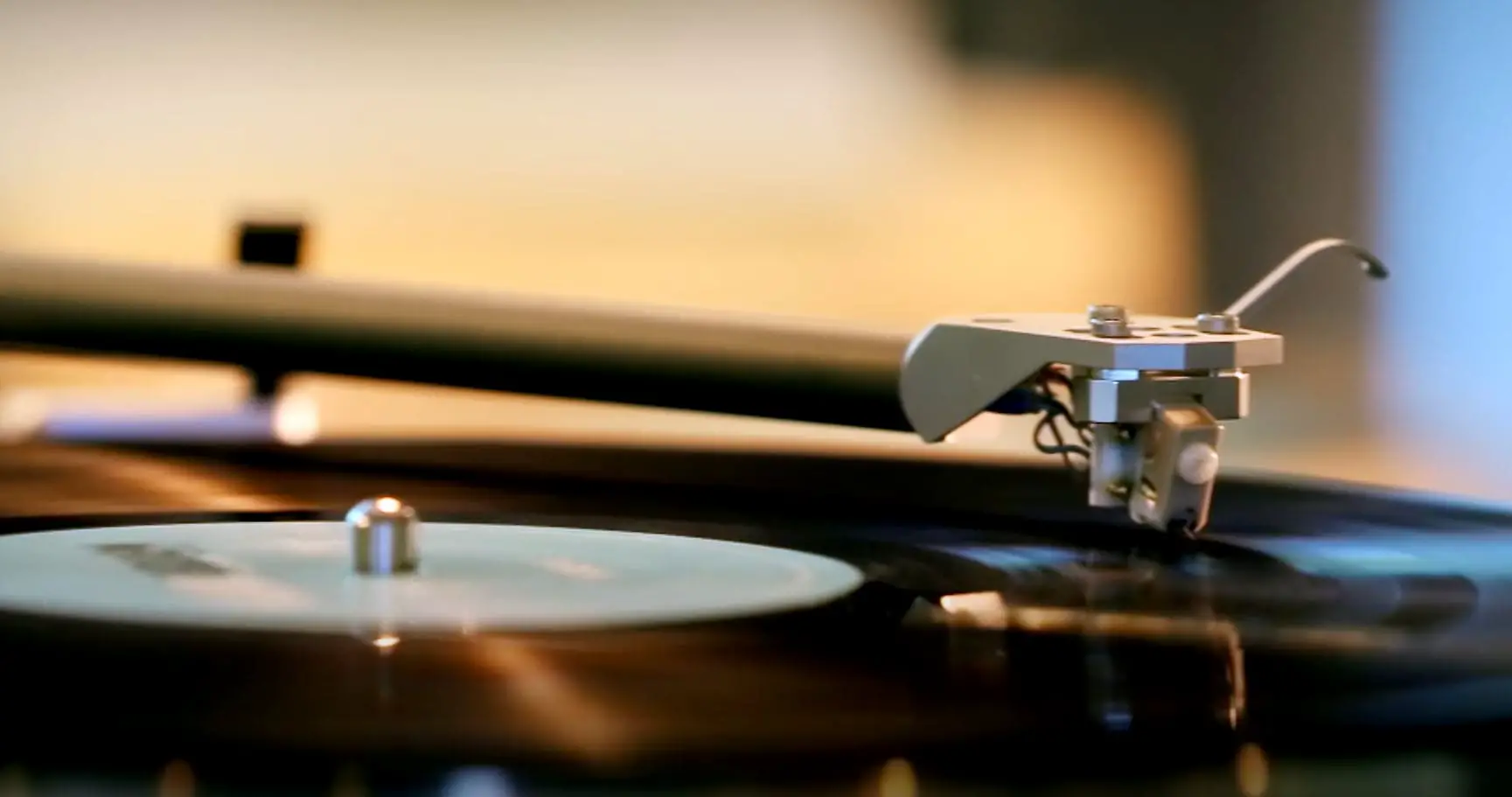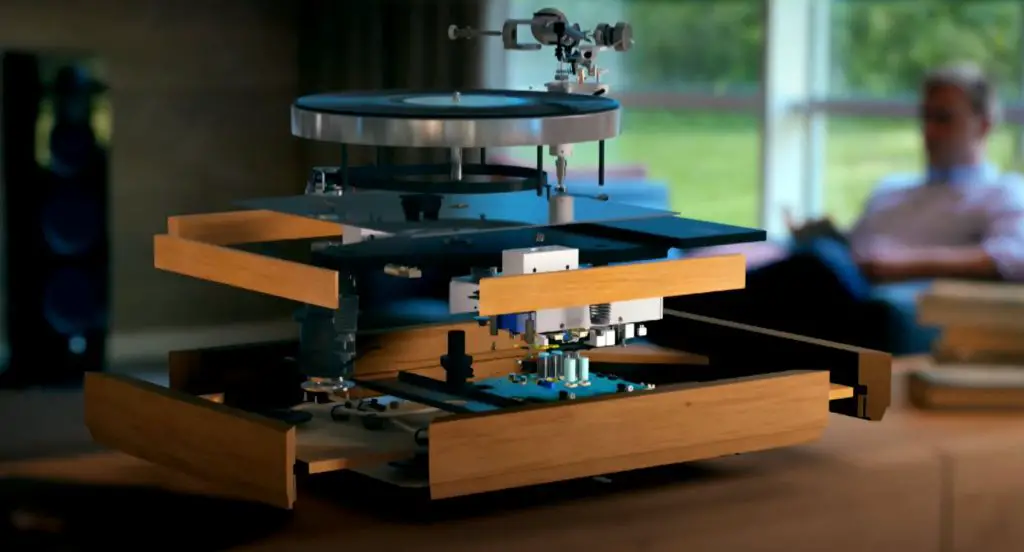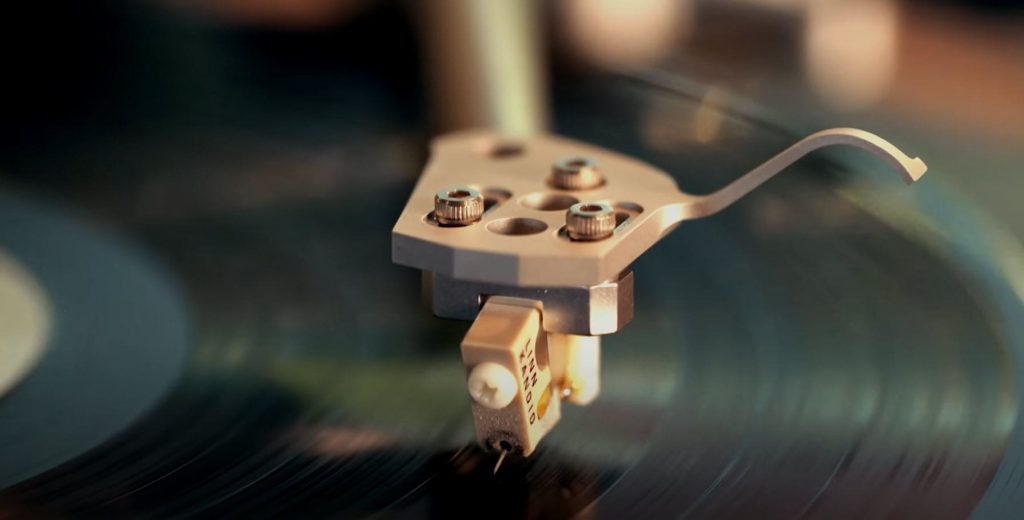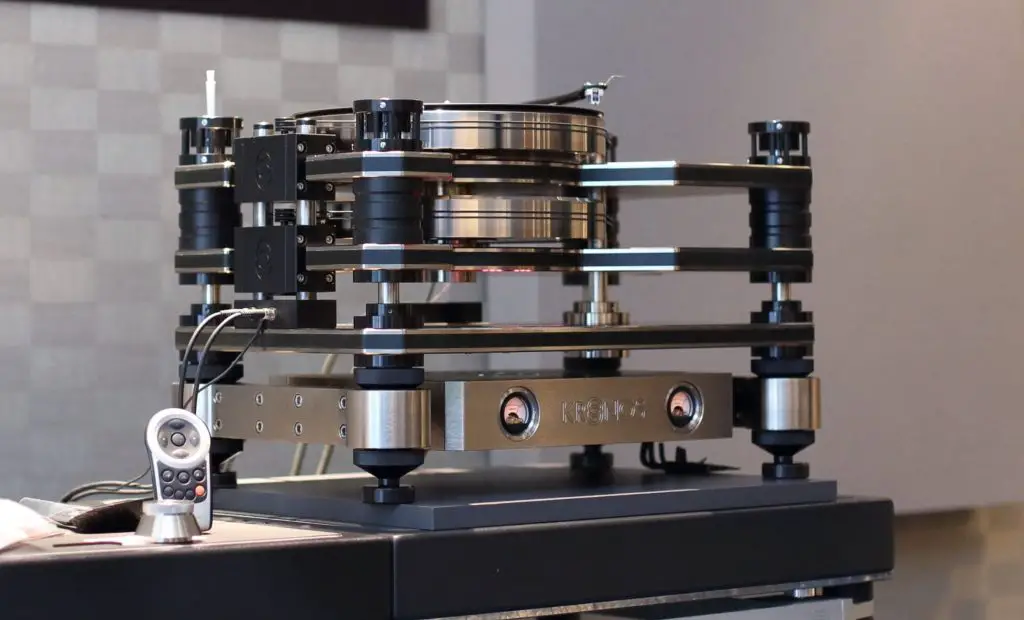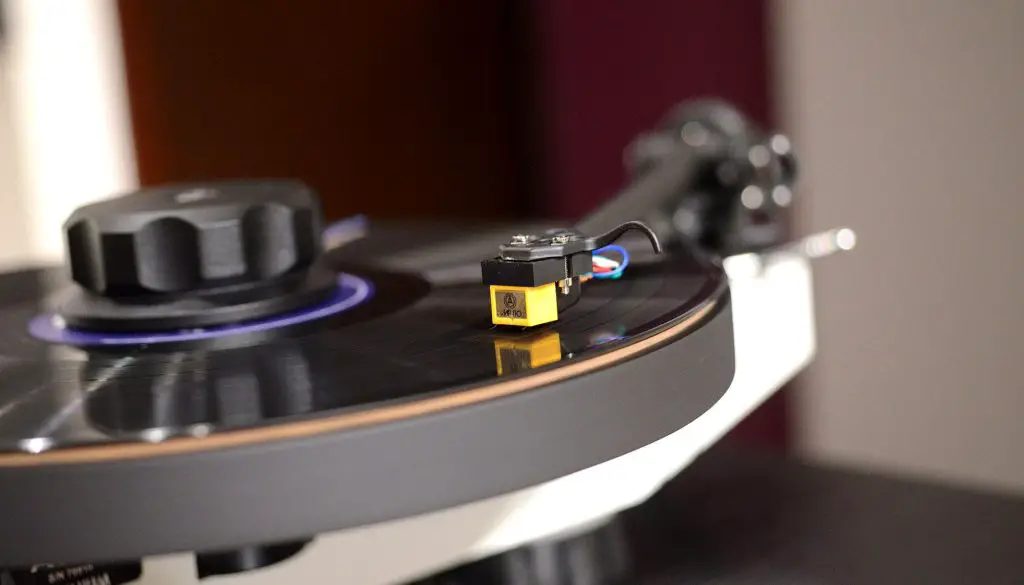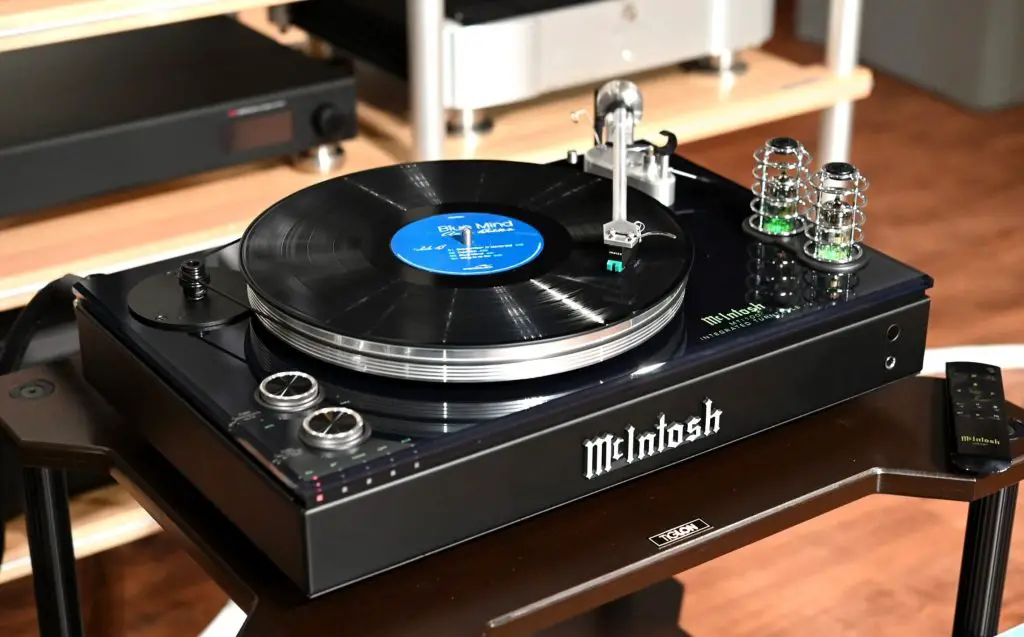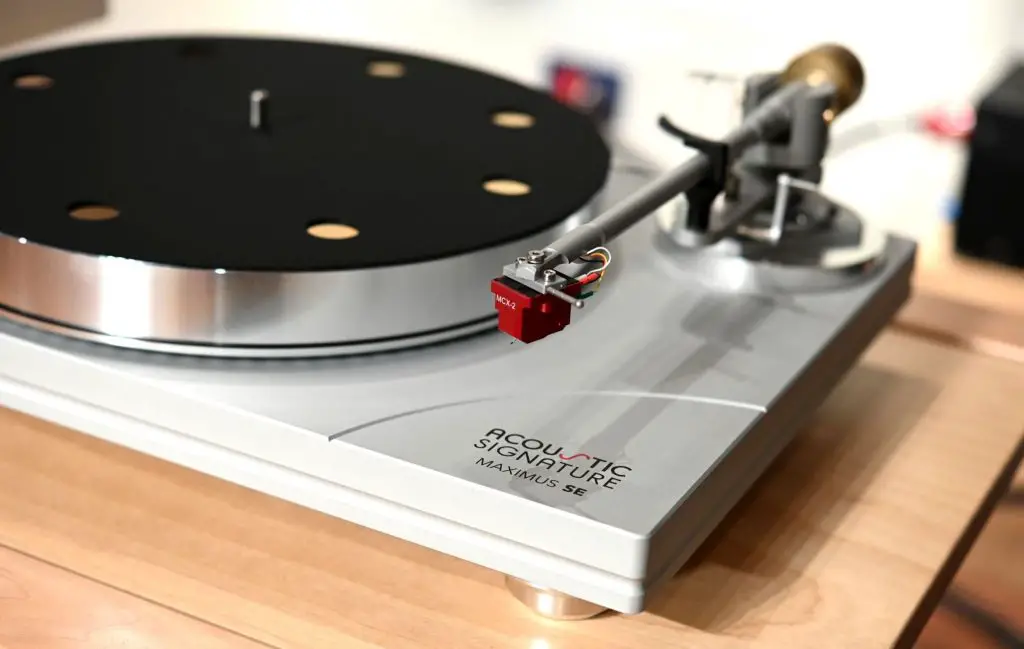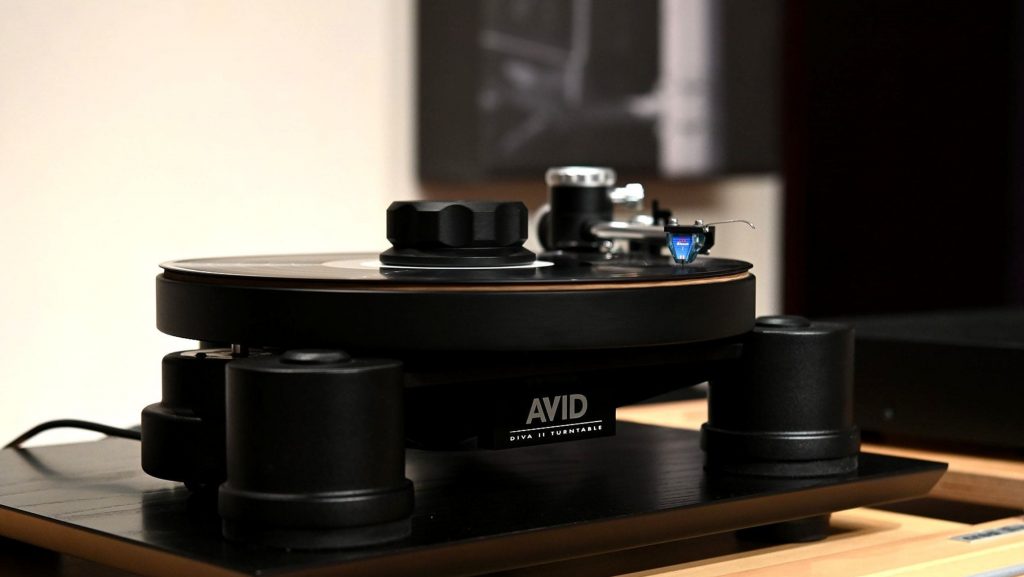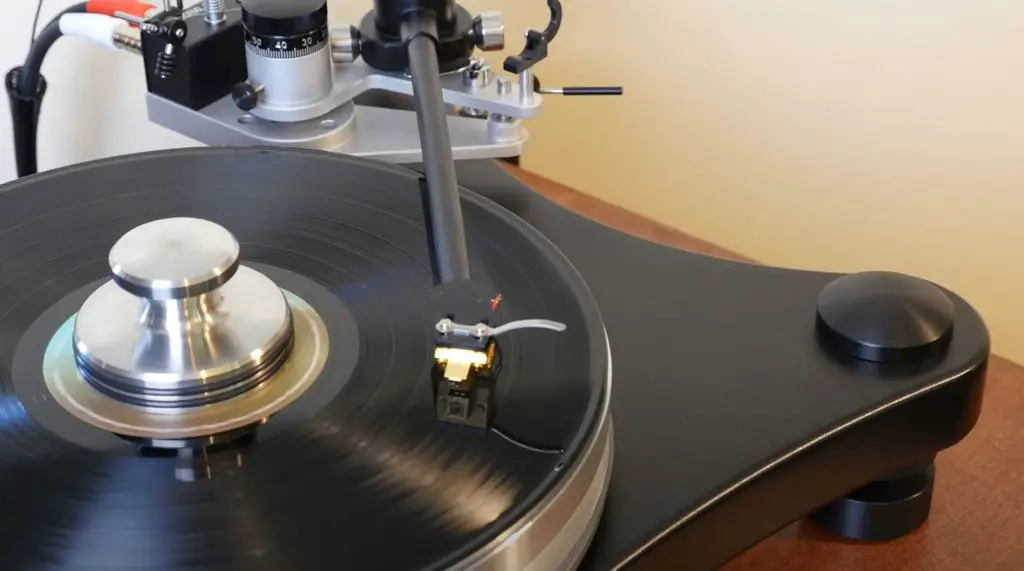The Beginner’s Guide to Buying Your First Turntable
I. Introduction
If you’re a music lover, you may have considered buying a turntable to play vinyl records. But what exactly is a turntable, and how does it work?
A turntable is a device that plays vinyl records. It consists of a platter (the circular platform that the record sits on) that is rotated by a motor at a specific speed (either 33 1/3 rpm or 45 rpm). The turntable also has a tonearm, which is a long, thin arm that holds the cartridge (a small device that converts the physical movement of the needle into an electrical signal).
As the record spins on the platter, the needle in the cartridge follows the grooves on the record, vibrating in response to the music encoded in the grooves. This vibration is then converted into an electrical signal, which is amplified by a receiver or amplifier and played through speakers.
There are many benefits to owning a turntable. For one, many music lovers prefer the warm, analog sound of vinyl records to digital formats. There’s also a certain nostalgia associated with playing records, as it harkens back to a time before digital music dominated the market.
However, it’s important to note that turntables require some maintenance and can be more expensive upfront than digital options. The stylus (the needle in the cartridge) will eventually wear out and need to be replaced, and the turntable itself may need occasional cleaning and adjustments to ensure it’s functioning properly.
Additionally, you’ll need to purchase a receiver or amplifier and speakers to connect to your turntable if you don’t already have them.
Overall, while there are some additional costs and considerations to take into account, owning a turntable can be a rewarding and enjoyable experience for music lovers. In the following sections, we’ll go over the different types of turntables available, as well as some factors to consider when shopping for your first turntable.
II. Types Of Turntables
When it comes to choosing a turntable, there are several different types to consider. Here’s a brief overview of some of the main options:
Belt-driven turntables: These turntables use a belt to connect the motor to the platter, which helps to reduce vibrations that can affect the sound quality. Belt-driven turntables are generally more affordable than direct-drive turntables, and they’re good for casual listening at home.
- Direct-drive turntables: These turntables have the motor built directly into the platter, which allows for faster start-up and stops times. They’re also less prone to problems caused by the belt breaking or slipping. Direct-drive turntables are popular with DJs because of their fast start-up times and durability, but they can be more expensive than belt-driven turntables.
- USB turntables: These turntables have a USB output, which allows you to connect them to your computer and digitize your vinyl records. This can be a convenient way to listen to your records on the go, or to preserve them for posterity. However, the sound quality of USB turntables may not be as good as other types of turntables.
- Portable turntables: These are small, lightweight turntables that are designed to be easily transported. They’re a good option if you’re short on space or want to be able to take your records with you when you travel. Keep in mind that the sound quality of portable turntables may not be as good as larger, more expensive turntables.
- DJ turntables: These are specialized turntables that are designed specifically for DJing. They usually have direct-drive motors, pitch control (which allows you to adjust the speed of the record), and other features that are useful for mixing and scratching. DJ turntables tend to be more expensive than other types of turntables, and they’re not necessary for casual listening at home.
When shopping for a turntable, it’s important to consider what you’ll be using it for and what your budget is. Do you want a turntable for casual listening at home, or do you plan to use it for DJing? Do you have space for a larger, more expensive turntable, or do you need something more compact and portable? Answering these questions will help you narrow down your options and find the best turntable for your needs.
III. Factors To Consider When Shopping For A Turntable
When it comes to shopping for a turntable, there are several factors to consider. Here are a few of the main ones:
- Budget: Turntables can range in price from a few hundred dollars to several thousand dollars. It’s important to set a budget before you start shopping and to keep in mind that you may need to spend more upfront to get a turntable with better sound quality or more features. That being said, it’s possible to find good-quality turntables at a variety of price points, so don’t feel like you have to break the bank to get a good one.
- Sound quality: The sound quality of a turntable can vary significantly depending on the quality of the components and the manufacturing process. In general, turntables with higher-quality components and better build quality will produce better sound. It’s worth taking the time to research different brands and models and read reviews to get an idea of the sound quality you can expect.
- Brand reputation: Some brands have a reputation for producing high-quality turntables, while others are known for producing cheaper, lower-quality models. It’s worth doing some research to see which brands have a good reputation in the turntable market. That being said, don’t discount a brand just because you haven’t heard of it – there are some lesser-known brands that produce excellent turntables at affordable prices.
- Features: Turntables can come with a variety of features, such as automatic tonearms (which lift the tonearm off the record and return it to the armrest at the end of the record), built-in preamps (which amplify the signal from the turntable), and replaceable styli (which allow you to easily change the needle in the cartridge). Decide which features are most important to you and look for a turntable that has them. Keep in mind that more features usually mean a higher price tag.
When shopping for a turntable, it’s important to consider your budget, the sound quality you’re looking for, the reputation of the brand, and the features that are most important to you. By taking the time to research and compare different options, you’ll be able to find the best turntable for your needs.
IV. Setting Up Your Turntable
Once you’ve purchased a turntable, it’s time to set it up. Here are the steps you’ll need to take:
- Placing the turntable on a stable surface: It’s important to place your turntable on a stable, level surface to ensure that it functions properly. Avoid placing it on a carpet or a surface that vibrates (such as a speaker). A sturdy shelf or a table is usually a good choice.
- Setting up the tonearm and cartridge: Most turntables come with a tonearm and cartridge already installed, but you may need to adjust the tonearm balance and the tracking force (the amount of pressure that the stylus exerts on the record). Consult the manual for your turntable to see how to do this, or consider hiring a professional to set up your turntable for you.
- Connecting to a receiver or speakers: To play your records, you’ll need to connect your turntable to a receiver or amplifier, which will amplify the signal from the turntable and send it to your speakers. If your turntable has a built-in preamp, you can connect it directly to your speakers using a set of RCA cables. If it doesn’t have a built-in preamp, you’ll need to connect it to a receiver or amplifier using a set of RCA cables, and then connect your speakers to the receiver or amplifier. Consult the manual for your turntable, receiver, and speakers to see how to do this.
Setting up your turntable is relatively straightforward, but it’s important to take the time to do it correctly to ensure that you get the best sound quality possible. If you’re not comfortable setting up your turntable yourself, consider hiring a professional to do it for you.
V. Maintaining Your Turntable
To ensure that your turntable continues to function properly and produce the best sound quality possible, it’s important to maintain it regularly. Here are a few maintenance tasks to keep in mind:
- Cleaning the record and stylus: Dust and debris can accumulate on your records and the stylus (the needle in the cartridge), which can affect the sound quality. To clean your records, you can use a carbon fiber brush or a record cleaning solution and a microfiber cloth. To clean the stylus, you can use a stylus brush or a stylus cleaning solution. Consult the manual for your turntable for more detailed instructions.
- Checking and adjusting the tonearm balance: Over time, the tonearm balance (the amount of pressure that the stylus exerts on the record) may need to be adjusted. To check the tonearm balance, place a record on the platter and turn on the turntable. The tonearm should remain level and not move to the left or right. If it does, you’ll need to adjust the tonearm balance. Consult the manual for your turntable to see how to do this.
- Replacing the stylus: Over time, the stylus (the needle in the cartridge) will wear out and need to be replaced. This can be due to normal wear and tear, or because it has been damaged by debris or a dirty record. To replace the stylus, you’ll need to remove the cartridge from the tonearm and install a new one. Consult the manual for your turntable for more detailed instructions, or consider hiring a professional to do it for you.
Overall, it’s important to regularly clean your records, check and adjust the tonearm balance, and replace the stylus to ensure that your turntable continues to function properly and produce the best sound quality possible. By taking the time to maintain your turntable, you’ll be able to enjoy your vinyl collection for years to come.
VI. Conclusion
In conclusion, owning a turntable can be a rewarding and enjoyable experience for music lovers. The warm, analog sound of vinyl records is often preferred to digital formats, and there’s a certain nostalgia associated with playing records. While turntables require some maintenance and can be more expensive upfront than digital options, they’re a great way to enjoy your music collection.
When shopping for a turntable, it’s important to consider your budget, the sound quality you’re looking for, the reputation of the brand, and the features that are most important to you. There are many different types of turntables available, so it’s worth trying out a few different options to find the one that best fits your preferences and budget.
In the end, the most important thing is to find a turntable that you enjoy using and that meets your needs. Whether you’re a casual listener or a DJ, there’s a turntable out there for you. So go out and give vinyl a spin – you might just fall in love with it.
VII. Q&A For Turntables
What is the difference between a turntable and a record player?
A record player, on the other hand, is a more general term that can refer to any device that plays records, including turntables. Some record players may be all-in-one units that include a turntable, a receiver or amplifier, and speakers in a single package, while others may be standalone turntables that need to be connected to a separate receiver or amplifier and speakers.
The main difference between a turntable and a record player is that a turntable is specifically designed to play vinyl records, while a record player is a more general term that can refer to any device that plays records.
Are turntables better than CD?
Whether turntables are better than CD players is a matter of personal preference. Both formats have their own unique qualities and characteristics that can appeal to different people.
One advantage of turntables is that they produce a warm, analog sound that is often preferred to the digital sound of CDs. Vinyl records also have a certain nostalgia associated with them, and some people enjoy the physical experience of playing records. Turntables can also be more durable than CD players, since there are no moving parts in the cartridge (the needle in the cartridge simply follows the grooves on the record).
However, CD players have their own set of advantages. CDs are more convenient than records, since they don’t need to be physically handled and they can be easily stored in a compact case. CDs are also less prone to damage than records, which can scratch or become dirty over time. CD players are also usually smaller and more portable than turntables.
Ultimately, whether turntables or CD players are better depends on your personal preferences and needs. If you prefer the warm, analog sound of vinyl and don’t mind the maintenance required to keep records in good condition, a turntable may be the better choice for you. If you value convenience and portability, a CD player may be the better option.
What music sounds best on vinyl?
Vinyl records can produce a warm, rich sound that is often preferred to digital formats. This can make certain types of music sound particularly good on vinyl. Here are a few examples of music genres that may sound particularly good on vinyl:
- Jazz: Jazz music often has complex, layered arrangements that can benefit from the rich, full sound of vinyl.
- Classical: Classical music often has a wide dynamic range and can benefit from the clarity and detail that vinyl can provide.
- Rock: Rock music often has a lot of energy and intensity, and the warm, analog sound of vinyl can help to enhance these qualities.
- Hip-hop and electronic: Many hip-hop and electronic music tracks are based on samples of other tracks, and the warmth and depth of vinyl can help to bring out the nuances in these samples.
Overall, any type of music can sound good on vinyl, and it’s worth trying out different genres to see which ones you enjoy the most. Ultimately, the most important thing is to find a format that you enjoy listening to and that meets your needs.
